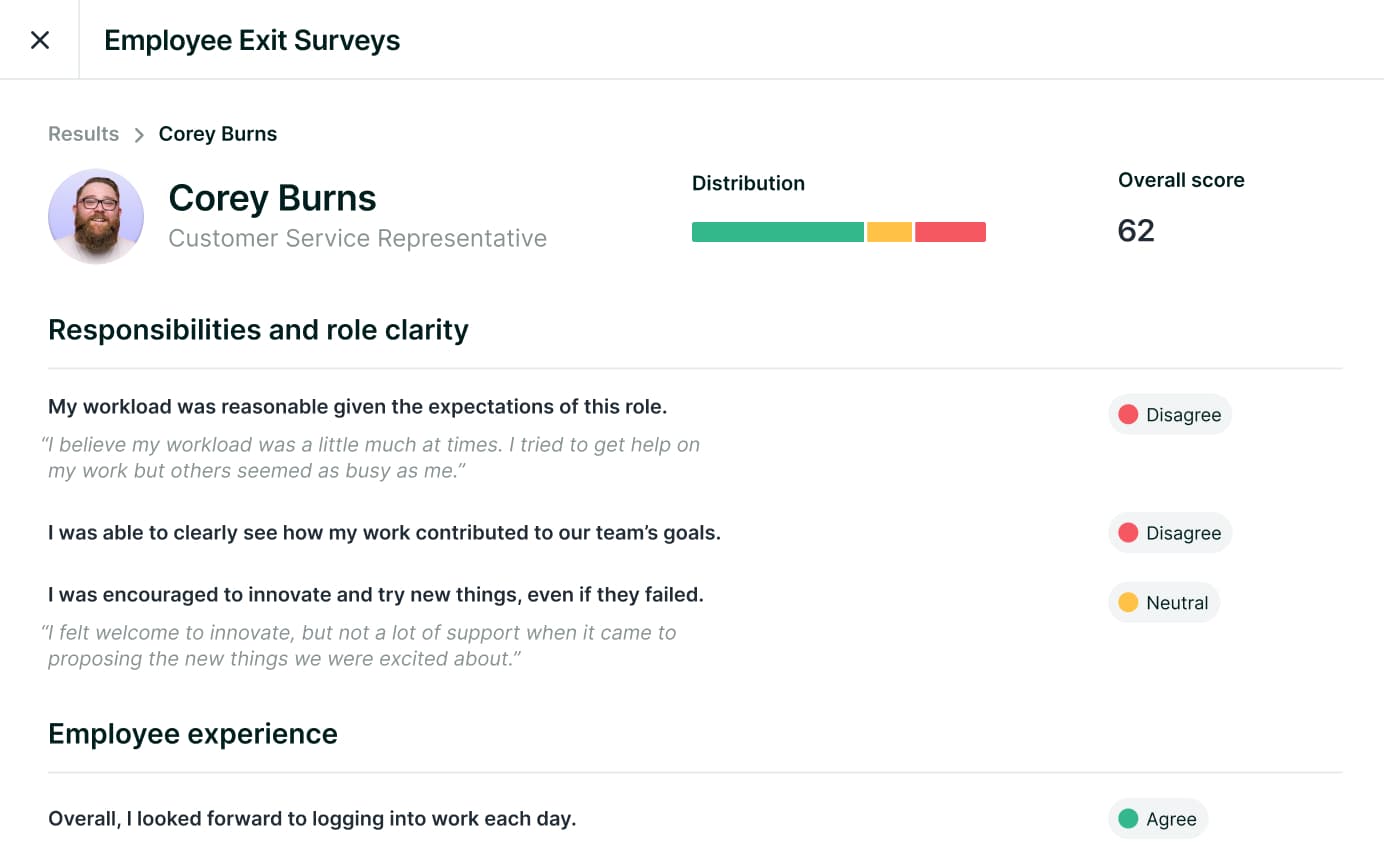4 minutes
A Guide to 5 Critical Employee Surveys
Sponsored by CUES Supplier member Lattice.
Happy employees lead to happy members, but an annual engagement survey isn’t enough. Things change throughout the year, and employee sentiment is likely to follow suit.
You can’t just measure employee satisfaction, either—you need a variety of question themes and survey types. For instance, credit unions struggling to compete for top talent should ask about career development opportunities, while HR teams planning to close digital skills gaps should regularly ask about confidence levels with digital tools and training topics.
A tailored, dynamic set of employee surveys can glean information at the individual, team, and department levels throughout the year. Moreover, asking questions across different categories provides HR with a holistic view of what matters most to employees. Whether you’re gathering year-end feedback or strategizing for the new year, these five types of surveys and sample questions are crucial to bringing your engagement strategy to life.
1. Engagement Surveys
Engagement surveys measure elements such as pride, connection, wellbeing, and motivation to assess overall engagement. Sent annually, engagement surveys ask employees to rank how strongly they agree or disagree with statements reflecting company-wide attributes that are of key interest to the credit union or the people team.
Engagement surveys should cover a set of core areas your credit union wants to measure and improve, such as:
- Purpose: I am fulfilled by the work that I'm doing.
- Community: I feel a sense of connection with my colleagues.
- Connection: I am invested in our mission, vision, and values.
- Loyalty: I see myself working at this company a year from now.
- Motivation: I'm motivated to do my best work.
2. Stay Interviews
Stay interviews are one-on-one meetings between managers and employees, designed to identify employee turnover risks early on. It’s common to leverage stay interviews after a significant team change, such as a merger or layoff, or after an employee has reached a particular tenure or milestone. Managers might be expected to ask employees questions such as:
- What do you enjoy most about working here?
- What are your favorite and least favorite projects to work on?
- How would you like to grow here over the next year or two?
- Do you see yourself working here for a long time?
- What’s keeping you from doing your best work?
3. Exit Interviews and Exit Surveys
No company likes to lose valuable employees, but employee departures are an opportunity to identify and prevent the reasons for the departure from affecting remaining team members. Exit interviews and surveys can help credit unions better understand the full picture of the employee experience, including regular recognition, manager effectiveness, and role clarity.

Interviews and surveys serve slightly different purposes, and are best used in tandem. Exit interviews are a one-on-one conversation between a departing employee and their manager. They’re more candid, lengthy, and detailed than exit surveys, which are digital forms with questions from HR for departing employees. Exit surveys are great for larger teams so HR can compare data points, and identify patterns of attrition over time.
Sample questions for exit surveys or interviews include:
- Was there a specific moment or turning point that led to this decision?
- What did you find the most rewarding part of your experience here?
- What did you find the most challenging part of your experience here?
- What issues on the team contributed to your departure?
4. Pulse Surveys
A pulse survey consists of five to eight questions that HR teams can send to a department or team to get a quick pulse on employee sentiment outside of the main engagement survey cycle. While engagement surveys tend to be more in-depth and infrequent, pulse surveys are a great way to get more lightweight, timely feedback.
Pulse surveys can be sent on a weekly, biweekly, or monthly cadence depending on what factors are impacting the company or team. HR teams are increasingly integrating with their existing communication platforms, such as Slack, to distribute pulse surveys in a place they already frequent on a daily basis.
Questions in these surveys should cover three categories:
- Timely topics: recent mergers or acquisitions, a return to the office, a change in leadership, or the impact of the current news cycle.
- Evergreen topics: feedback about corporate culture, manager effectiveness, remote working opportunities, or employee experience.
- Specific initiatives and projects: team-building efforts, growth opportunities, or workflows affecting employees’ self-efficacy or productivity.
5. HR Effectiveness Surveys:
HR effectiveness surveys gather employee feedback on HR strategies and policies. These surveys measure accessibility of workplace information and tools, internal company communications, learning and development programming, or employee awareness of specific HR functions. Sample questions include:
- I feel comfortable reaching out to our HR team for questions.
- I understand where to find information about changes to our credit union policies.
- Our HR team seems well equipped to handle this organization’s challenges.
- Generally, our credit union’s HR technology is modern and easy to use.
- Our HR team makes diversity, equity, inclusion, and belonging a priority.
A variety of survey types helps HR teams gather continuous feedback. Employee engagement isn’t a one-and-done—it requires consistent nurturing, improving, testing, adjusting, and measuring.
Halah Flynn is a senior content marketing manager at CUES Supplier member Lattice with eight years of experience producing content for human resources and higher education institutions, prioritizing authentic journalism, customer education and accessibility.







